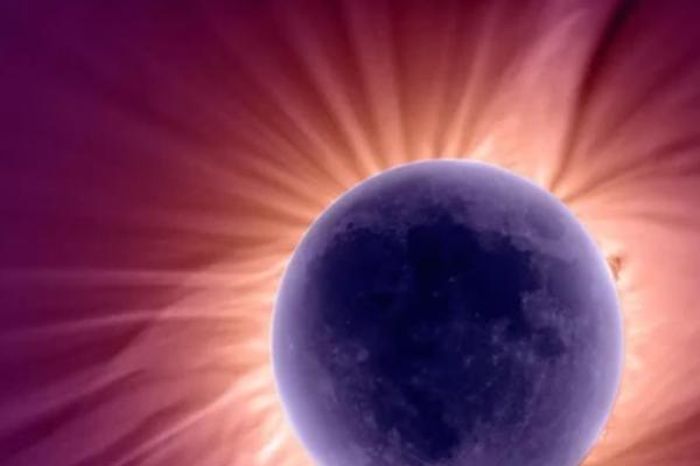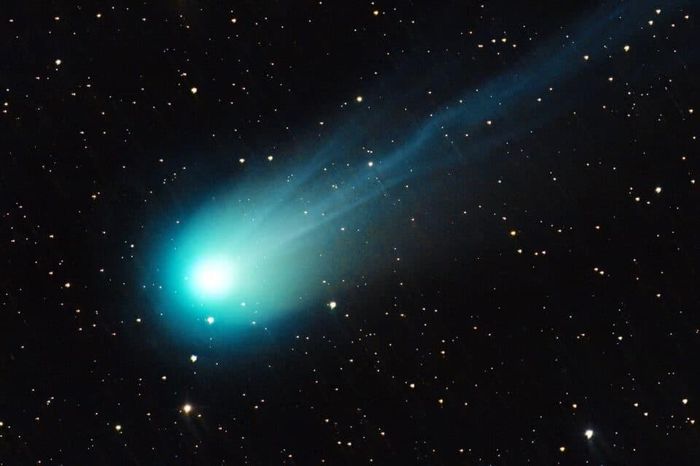Total solar eclipse in North America 'most impressive in hundreds of years'

The Mexican city of Mazatlan was the first place to witness the total solar eclipse as it began to appear over the Pacific Ocean. The total solar eclipse peaked in Mazatlan at 11:07 a.m. (local time) and lasted more than 4 minutes.
According to the US space agency (NASA), the path of the eclipse continues from Mexico, enters the US in Texas, and passes through the states of Oklahoma, Arkansas, Missouri, Illinois, Kentucky, Indiana, Ohio, Pennsylvania, New Zealand. York, Vermont, New Hampshire, and Maine. Small portions of Tennessee and Michigan may also experience a total solar eclipse. Cities in Maine will be the last places in the US to experience a total solar eclipse.
The total eclipse then entered Canada in the southern province of Ontario, and continued through the provinces of Quebec, New Brunswick, Prince Edward Island, and Cape Breton.
At times of total eclipse, crowds at different locations cheered in excitement as they saw the moon obscure the sun. Even though some places had clouds obscuring full visibility, people were still excited and cheered when the sky darkened in the middle of the day for a short moment.
A total solar eclipse occurs when the Moon passes between the Sun and the Earth, completely blocking the Sun's face. NASA said that after this total solar eclipse, the next total solar eclipse can be seen from the US states on August 23, 2044.
This total solar eclipse is considered a major event and "the most impressive in hundreds of years", for many reasons. First, this total solar eclipse lasts twice as long as the 2017 total solar eclipse, depending on the observer's location. This is also considered the longest total solar eclipse over land in more than a decade. In addition, the Sun's halo during this phenomenon will be very large. The reason is that the Sun is nearing its solar maximum - the most active time in the solar cycle lasting about 11 years.
This is also the longest total solar eclipse in the US since 1806. At the US-Mexico border, the viewing time for a total solar eclipse can be up to 4 minutes and 26 seconds. This is also the darkest total solar eclipse in the US in 217 years. Another interesting point is that during the eclipse, viewers can observe comet 12P/Pons-Brooks.
You should read it
- Why do total solar eclipses occur more frequently in the Northern Hemisphere than in the Southern Hemisphere?
- August 21, 2017: NASA will broadcast 360-degree videos directly on Facebook's transcontinental eclipse phenomenon on Facebook, you can see
- Tens of millions of people await the total solar eclipse in North America on April 8
- America must prepare 'carefully' for the Japanese Food Festival which will take place on August 21
- Admire the best images of the total solar eclipse on August 21
- 100,000 billion cicadas came to life at the same time in the US after a total solar eclipse
- Amazing phenomenon - the 'annular eclipse' glows in the sky today
- The 'Devil's Comet' appears with a total solar eclipse
May be interested
- Mysterious blue crescent decoding in many photos of total eclipse in America
 in the moment the sun disappeared in the sky of america, many people were fortunate to capture one of the most remarkable astronomical phenomena this year. in some of those photos, many people were startled when they saw a mysterious little blue crescent.
in the moment the sun disappeared in the sky of america, many people were fortunate to capture one of the most remarkable astronomical phenomena this year. in some of those photos, many people were startled when they saw a mysterious little blue crescent. - Admire the best images of the total solar eclipse on August 21
 let us admire the best images of the total solar eclipse yesterday - august 21!
let us admire the best images of the total solar eclipse yesterday - august 21! - 100,000 billion cicadas came to life at the same time in the US after a total solar eclipse
 after a total solar eclipse, up to 100 trillion cicadas are expected to emerge from hibernation in the us, creating a rare sight.
after a total solar eclipse, up to 100 trillion cicadas are expected to emerge from hibernation in the us, creating a rare sight. - Amazing phenomenon - the 'annular eclipse' glows in the sky today
 astronomers in central africa, madagascar and the south indian ocean will have the opportunity to see the fascinating natural eclipse of the day.
astronomers in central africa, madagascar and the south indian ocean will have the opportunity to see the fascinating natural eclipse of the day. - NASA is about to launch three rockets to penetrate the total solar eclipse on April 8
 according to nasa, three rockets carrying many modern equipment will fly into the sky on the day of the total solar eclipse april 8 to learn about this astronomical phenomenon.
according to nasa, three rockets carrying many modern equipment will fly into the sky on the day of the total solar eclipse april 8 to learn about this astronomical phenomenon. - Do you know what a solar eclipse looks from the Moon?
 recently nasa announced a gif to help us understand what it feels like to observe an eclipse on earth when standing from the moon.
recently nasa announced a gif to help us understand what it feels like to observe an eclipse on earth when standing from the moon. - What is a solar eclipse? When does a solar eclipse take place?
 besides the lunar eclipse, eclipse is also one of the interesting astronomical phenomena that can be observed from the earth, getting the attention of many people.
besides the lunar eclipse, eclipse is also one of the interesting astronomical phenomena that can be observed from the earth, getting the attention of many people. - NASA is about to launch 3 rockets to 'penetrate' the solar eclipse
 according to nasa, three rockets carrying many devices will fly into the sky on april 8, while the united states is covered by a total solar eclipse.
according to nasa, three rockets carrying many devices will fly into the sky on april 8, while the united states is covered by a total solar eclipse. - What is a lunar eclipse? Lunar eclipse occurs when?
 the lunar eclipse is one of the most interesting astronomical phenomena taking place in the universe that humans can observe from earth. in the following article, we will learn more about this phenomenon.
the lunar eclipse is one of the most interesting astronomical phenomena taking place in the universe that humans can observe from earth. in the following article, we will learn more about this phenomenon. - Signs that a part of mainland Australia once belonged to North America
 also known as columbia, nuna is a supercontinent that geologists believe has existed between 2.5 and 1.5 billion years ago. now, there is new evidence of how these fragments were once combined - australian scientists found boulders in northern queensland australia, combined with stones from c
also known as columbia, nuna is a supercontinent that geologists believe has existed between 2.5 and 1.5 billion years ago. now, there is new evidence of how these fragments were once combined - australian scientists found boulders in northern queensland australia, combined with stones from c










 The 'Devil's Comet' appears with a total solar eclipse
The 'Devil's Comet' appears with a total solar eclipse Chinese scientists found vulnerabilities in NASA's hypersonic weapons development software
Chinese scientists found vulnerabilities in NASA's hypersonic weapons development software Tens of millions of people await the total solar eclipse in North America on April 8
Tens of millions of people await the total solar eclipse in North America on April 8 The Soyuz spacecraft returned from the ISS, landing in Kazakhstan
The Soyuz spacecraft returned from the ISS, landing in Kazakhstan FAA 'green light' for JetZero's 'mono-wing' aircraft
FAA 'green light' for JetZero's 'mono-wing' aircraft NASA robot enters the alien 'river of life'
NASA robot enters the alien 'river of life'